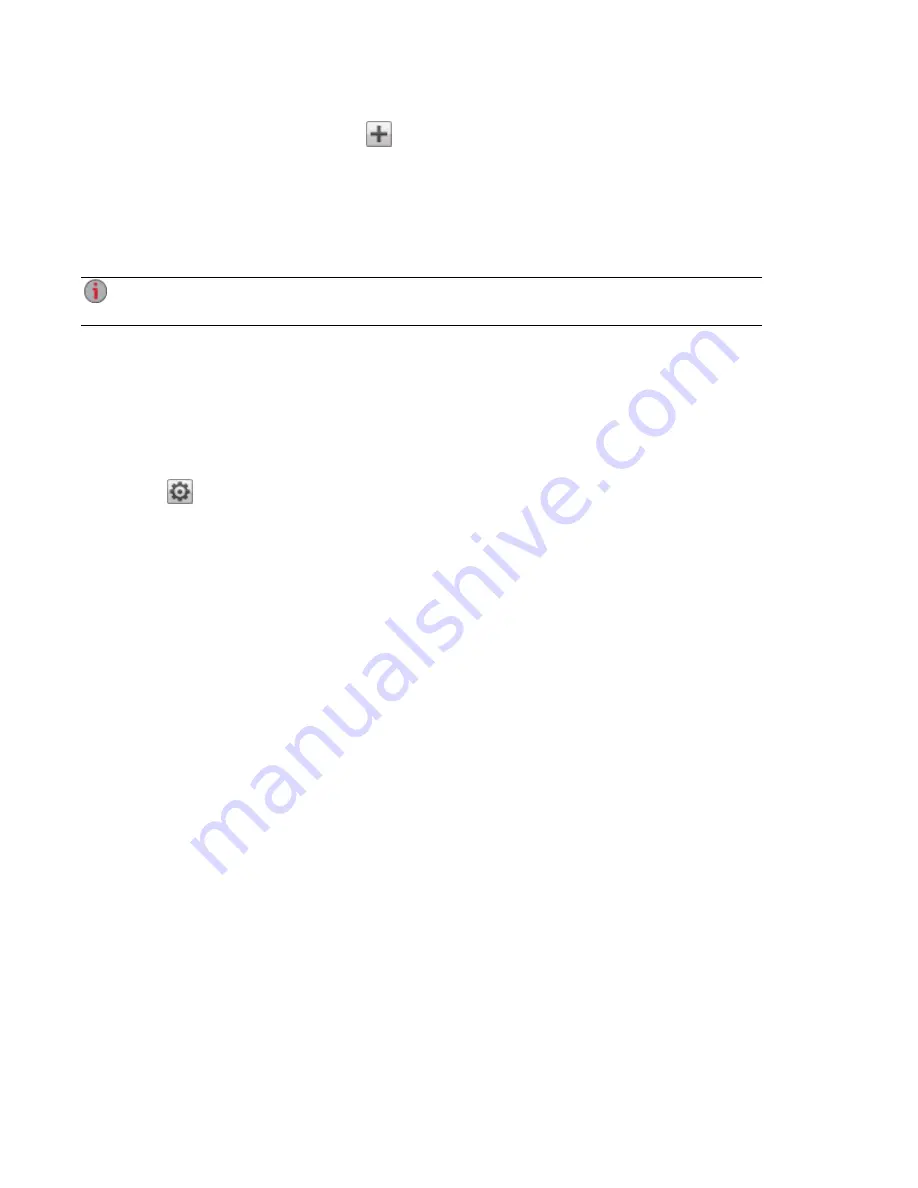
1. To add permissions to a Share, click
Add access permissions.
2. From the Add Access Permissions pop-up window, select a Share or Shares for the user or group
to access. Select the checkbox in the title bar to select all the Shares listed.
3. Click Apply to save your changes.
4. In the table listing the Shares, check Read or Write for each Share. A user or group can have full
access by checking both Read and Write. To grant only read access, check only Read.
A user or group must have read access at a minimum. A user or group cannot have only write
access.
5. Uncheck Read to remove all access to a Share and remove the Share from the table.
6. Click Apply to save your changes.
7. If NFS is enabled, the GID field is visible. The GID value must be the same on both the Linux client
and the ix2 for the client to access files. To modify the GID, type a new GID value.
Setting Quotas
1. Click
Quota settings to enable quotas and set a default quota. Quotas are only set for
individual users, and not groups.
2. In the Quota Settings dialog, click Enable quotas to turn on quotas for each user. Quotas can be
set for each user individually or set as a default value.
3. Enter a Default Quota in gigabytes. When you set a default quota, this becomes the quota size for
all new users.
4. Check Set default quota for all users to globally set the same quota size to all users. You may
overwrite this default value for individual users by setting their quota size separately in the user's
Information section.
5. Click Apply to save your changes.
Deleting Active Directory Users and Groups
To delete a user or a group:
1. From the ix2 Management Console, click Users and Groups to open the Users & Groups page.
2. To delete an existing user or group, click to expand that user or group.
3. In the Information section, click Delete. Deleting a user or group does not delete any Shares to
which the user or group has access. Click the checkbox if you want to Delete all Shares that
only this user can access.
4. In the confirmation pop-up window, click Yes.
5. If you do not wish to delete a user or group, click No to return to the Users & Groups page.
Securing Your ix2 Network Storage and Contents
Using Active Directory Domain to Manage Users and Groups
69
Summary of Contents for Iomega ix2
Page 1: ...ix2 Network Storage with LifeLine 4 0 User Guide ...
Page 10: ...x ...
Page 11: ...Setting up Your ix2 Network Storage Setting up Your ix2 Network Storage 1 CHAPTER 1 ...
Page 30: ...Setting up Your ix2 Network Storage 20 Setting up Personal Cloud Security and File Sharing ...
Page 31: ...Sharing Files Sharing Files 21 CHAPTER 2 ...
Page 48: ...Sharing Files 38 Getting Content from a USB External Storage Device ...
Page 54: ...iSCSI Creating IP Based Storage Area Networks SAN 44 Deleting iSCSI Drives ...
Page 55: ...Drive Management Drive Management 45 ...
Page 58: ...Drive Management 48 Managing Drives ...
Page 59: ...Backing up and Restoring Your Content Backing up and Restoring Your Content 49 CHAPTER 5 ...
Page 68: ...Backing up and Restoring Your Content 58 Backing up Your ix2 Network Storage ...
Page 97: ...Sharing Content Using Social Media Sharing Content Using Social Media 87 CHAPTER 8 ...
Page 103: ...Media Management Media Management 93 CHAPTER 9 ...
Page 115: ... Delete a torrent job Click to delete the torrent download Media Management Torrents 105 ...
Page 120: ...Media Management 110 Videos ...
Page 125: ...Upgrading Your ix2 Network Storage Upgrading Your ix2 Network Storage 115 CHAPTER 11 ...
Page 127: ...being accessed Upgrading Your ix2 Network Storage Software Updates 117 ...
Page 128: ...Upgrading Your ix2 Network Storage 118 Software Updates ...
Page 131: ...Hardware Management Hardware Management 121 CHAPTER 13 ...
Page 140: ...Hardware Management 130 Troubleshooting Routers ...
Page 141: ...Additional Support Additional Support 131 CHAPTER 14 ...
Page 144: ...AdditionalSupport 134 Support ...
Page 145: ...Legal Legal 135 CHAPTER 15 ...






























